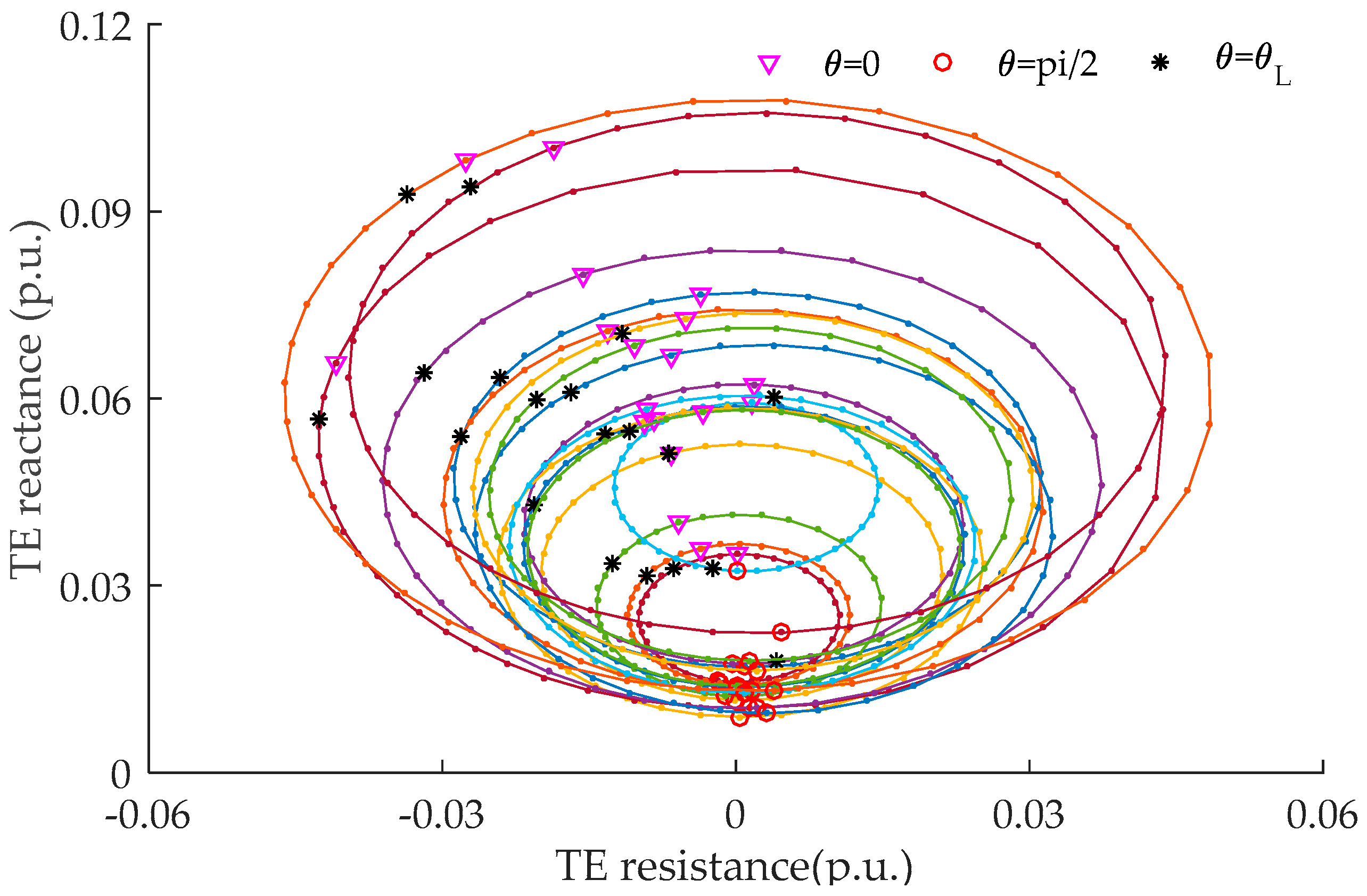Effect of Load Change on the Thevenin Equivalent Impedance of Power System
Abstract
:1. Introduction
2. Effect of on Thevenin Equivalent Impedance
2.1. Problem Statement
2.2. Thevenin Equivalent Impedance Forming a Closed Curve in Complex Plane
2.3. Thevenin Equivalent Impedances Shrinking to a Point When Voltage Collapses
3. Case Study
3.1. Case 1: Thevenin Equivalent Impedance with
3.2. Thevenin Equivalent Impedance When Voltage Approaches Collapse
4. Conclusions
Author Contributions
Conflicts of Interest
References
- Su, H. An Efficient Approach for Fast and Accurate Voltage Stability Margin Computation in Large Power Grids. Appl. Sci. 2016, 6, 335. [Google Scholar] [CrossRef]
- Hart, P.M. Characterising the power system at a load busbar by measurement. IEEE Proc. C Gener. Transm. Distrib. 1986, 133, 87–94. [Google Scholar] [CrossRef]
- Abdelkader, S.M.; Morrow, D.J. Online Thevenin Equivalent Determination Considering System Side Changes and Measurement Errors. IEEE Trans. Power Syst. 2015, 30, 2716–2725. [Google Scholar] [CrossRef]
- Abdelkader, S.M.; Morrow, D.J. Online Tracking of Thévenin Equivalent Parameters Using PMU Measurements. IEEE Trans. Power Syst. 2012, 27, 975–983. [Google Scholar] [CrossRef]
- Vu, K.; Begovic, M.M.; Novosel, D.; Saha, M.M. Use of local measurements to estimate voltage-stability margin. IEEE Trans. Power Syst. 1999, 14, 1029–1035. [Google Scholar] [CrossRef]
- Luo, H.-W.; Wu, Z.-Q.; Dai, Q.-H.; Deng, Y.; Zhao, K.-Y.; Zeng, X.-J. Fast Computation of Thevenin Equivalent Parameters. In Proceedings of the 2012 Asia-Pacific Power and Energy Engineering Conference (APPEEC), Shanghai, China, 27–29 March 2009; Volume 1, pp. 35–39.




© 2017 by the authors. Licensee MDPI, Basel, Switzerland. This article is an open access article distributed under the terms and conditions of the Creative Commons Attribution (CC BY) license ( http://creativecommons.org/licenses/by/4.0/).
Share and Cite
Sun, T.; Li, Z.; Rong, S.; Lu, J.; Li, W. Effect of Load Change on the Thevenin Equivalent Impedance of Power System. Energies 2017, 10, 330. https://doi.org/10.3390/en10030330
Sun T, Li Z, Rong S, Lu J, Li W. Effect of Load Change on the Thevenin Equivalent Impedance of Power System. Energies. 2017; 10(3):330. https://doi.org/10.3390/en10030330
Chicago/Turabian StyleSun, Tiankui, Zhimin Li, Shuang Rong, Jian Lu, and Weixing Li. 2017. "Effect of Load Change on the Thevenin Equivalent Impedance of Power System" Energies 10, no. 3: 330. https://doi.org/10.3390/en10030330




